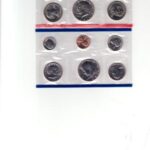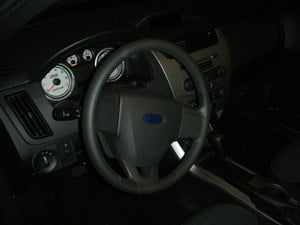In coin collecting, one will often come upon the term mintage or mintage number. What is a mintage number, might you ask? In fact, a coin’s mintage number refers to the actual number of coins struck for a certain denomination, date, and mint-mark. For example, if 5 billion 2008 Lincoln Cents are to be made at the Denver mint, then the 2008-D Lincoln Cent mintage number will be 5,000,000,000. In other words, the term mintage refers to the actual number of coins produced. However, there is one very important caveat to this matter: mintage numbers do not necessarily relate in any way to the number of coins actually available.
5 billion 2008-D Lincoln Cents may be minted, but think of the number of these coins that will get lost, be damaged, or melted. Furthermore, should there hypothetically be some sort of issue with the 2008-D Lincoln cents that warrants the U.S. Mint to recall some or all of these coins (subsequently destroying them) then, in reality, the number of 2008-D Lincoln cents becomes far less than 5 billion. While a mint recall of such magnitude is highly unlikely, this does grandly illustrate the notion of why mintage numbers should in no way be viewed as an bona fide census count of the coins for which said mintage numbers are published. Perhaps the most notorious reason that a coin’s actual numbers may be lower than its mintage number is that many coins, especially gold and silver coins, are melted down for their precious metal content.
It may seem obvious to think that the lower a coin’s mintage is, the more valuable it will be. In actuality though, relative supply and demand is truly a more accurate reflection of a coin’s value than a certain coin’s mintage alone. Consider the value of a 1909-S V.D.B. cent (“S,” the mintmark, means the coin was produced at the San Francisco mint; “V.D.B.” are the initials for the coin’s designer, Victor David Brenner, whose initials were displayed on the reverse of some 1909-dated cents). The coin’s mintage is slightly less than 500,000 coins. Currently, the coin easily sells for a few-hundred dollarsin even the lowest grades. Now, think about the many dates in the Liberty Seated coins series (minted between the 1830s and 1890s, depending upon denomination). You could readily find and pay less to purchase a Liberty Seated coin that is older and has a far lower mintage number than the 1909-S V.D.B. cent.
Why is this the case? The reason you could purchase the scarcer, older coin for less money than the more recent, higher-mintage 1909-S V.D.B. cent is that Lincoln cents are popularly collected as a series, therefore requiring a collector to purchase a 1909-S V.D.B. cent should the collector want a complete set of Lincoln cents. On the other hand, very few people collect every date and mint-mark of any denomination bearing the Liberty seated design. Therefore, you can quickly realize that the relatively higher demand by collectors for the 1909-S V.D.B. cent drives up that coin’s price.
Mintage numbers, therefore, should be taken with a grain of salt. While highly important in determining how scarce a coin may be, the mintage number in itself is not always a true reflection of the number of coins that exist. Furthermore, determining the value of a “rare” coin may require more than simply basing a price on mintage numbers alone. At any rate, a coin’s mintage number represents a very important aspect of numismatic data and is one of many important factors in judging both a coin’s scarcity as well as its value.


